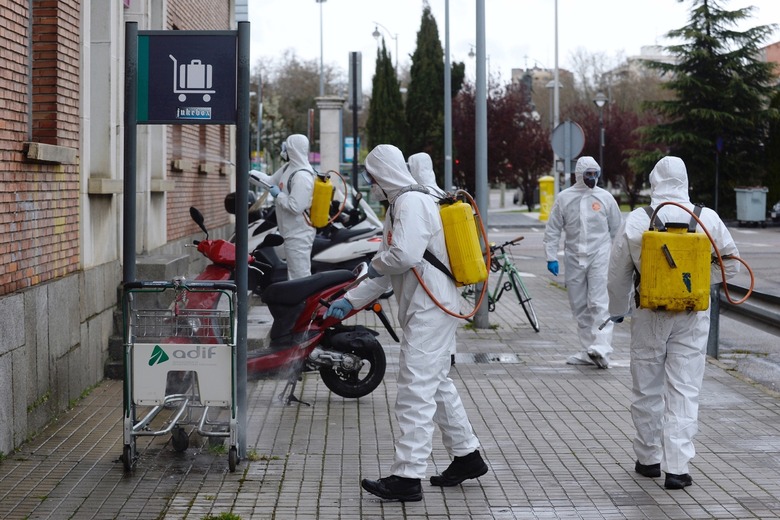New Study Finally Reveals How Long Coronavirus Survives On Surfaces And In The Air
- Researches have looked at how long the novel coronavirus can survive on surfaces and in the air to better understand how to prevent infections.
- The virus that causes the COVID-19 disease can survive for up to three hours in the air, and up to three days on certain surfaces.
- The findings further support the idea that there are two simple things anyone can do to prevent infections: Social distancing and thorough hand-washing.
- Visit BGR's homepage for more stories.
You've been hearing this advice everywhere for months now, and I'm about to repeat the same thing: wash your hands often, especially when you return back home — and be sure to use sanitizer if available while you're out and about. Also, don't EVER touch your face until you've washed your hands. It can be annoying when you have to make a conscious effort not to put your hands anywhere near your face, but it's all for your own good.
The reason we've heard these things since the novel coronavirus was discovered in China is pretty simple. The SARS-CoV-2 virus can survive outside of the body. It's spread via tiny droplets when someone coughs or sneezes, droplets that then land on surfaces around the infected person. Touching those surfaces is enough to get it on your hands. And from there, it might be just a matter of time until it reaches your mouth or eyes.
Researchers have looked at the COVID-19 virus's ability to survive on different surfaces and in the air, and the conclusions aren't great. The virus can live from hours to days outside of the body, and that's why washing your hands and disinfecting surfaces is crucial for beating this illness. Also, because it can live up to three hours in the air, you should avoid being in close proximity to people until the spread of this deadly virus is under control.
Published in The New England Journal of Medicine earlier this week, the new study is penned by researchers from various institutions, including National Institute of Allergy and Infectious Diseases (Hamilton, MT), Princeton University (Princeton, NJ), University of California (Los Angeles, CA), and Centers for Disease Control and Prevention (Atlanta, GA).
The researchers compared the COVID-19 virus (SARS-CoV-2) with its predecessor, the SARS-CoV-1, which is the most closely related human coronavirus, in five environmental conditions, including aerosols (air), plastic, stainless steel, copper, and cardboard.
Here's how long the novel coronavirus can survive outside of the body in each situation, according to their tests:
- Air: 3 hours
- Plastic: Up to 72 hours
- Stainless steel: Up to 72 hours
- Copper: Up to 4 hours
- Cardboard: Up to 24 hours
The researchers said that even though the virus can live up to three days on plastic and stainless steel, it has a longer half-life and is more stable on plastic.
The findings for both coronavirus types were similar, although it's the SARS-CoV-2 results that matter most since that's the virus we're all trying to get rid off right now:
We found that the stability of SARS-CoV-2 was similar to that of SARS-CoV-1 under the experimental circumstances tested. This indicates that differences in the epidemiologic characteristics of these viruses probably arise from other factors, including high viral loads in the upper respiratory tract and the potential for persons infected with SARS-CoV-2 to shed and transmit the virus while asymptomatic. Our results indicate that aerosol and fomite transmission of SARS-CoV-2 is plausible, since the virus can remain viable and infectious in aerosols for hours and on surfaces up to days (depending on the inoculum shed). These findings echo those with SARS-CoV-1, in which these forms of transmission were associated with nosocomial spread and super-spreading events, and they provide information for pandemic mitigation efforts.
In other words, keep washing your hands and be conscious of not touching your face. Keep disinfecting commonly used surfaces and keep practicing social distancing. You will have to buy essentials from time to time, and that means going out or ordering online. In both cases, you should continue to sanitize your hands, avoid contact with others, and sanitize whatever you buy as soon as it enters your home. The advantage here is that stores and restaurants will be — or should be — equally paranoid about cleanliness, so the risk of infection should be significantly diminished.
